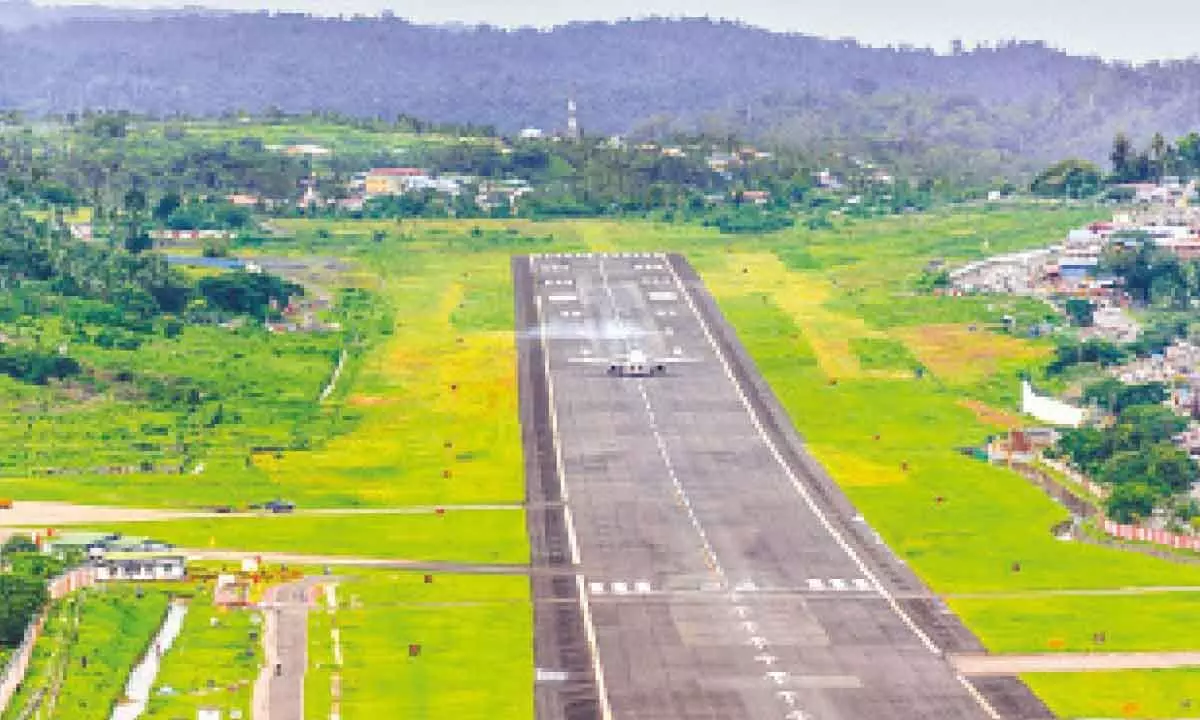Airports can fuel aviation industry’s take-off into newer horizons
The Centre has already launched a study on 300 potential airstrips across the country
image for illustrative purpose

New-age airports are characterised by their adoption of technology and digital solutions, aimed at enhancing the passenger experience and providing a 'plug and play' environment for airlines
According to industry experts, the demand for air travel in India is likely to remain strong in the near future due to factors like rising disposable income in tier-II and tier-III cities. This demand has also underscored the need for new airports and multimodal transport connectivity
Development of greenfield airports has become the driving force for growth, thereby facilitating addition of significant capacities. The Union Government has, so far, accorded in-principle approval for establishing 21 greenfield airports. Of them, 12 have been operationalised. Three of them, Mopa, Shivammogga and Rajkot, were operationalised last year.
According to the Ministry of Civil Aviation (MoCA), India’s domestic passengers are expected to cross 300 million by 2030, almost doubling from the 153 million in 2023. The development of these greenfield airports has thus become necessary and it is expected to cater to the increased demand for air travel in many cities. This implies that in order to keeping growing in the aviation sector, the demand and supply of domestic passengers in Tier 2 and 3 cities have to be taken into consideration.
With many domestic destinations considered for tourism by air passengers the demand for enough flights connecting them with the urban cities will be crucial.
Brownfield airports in India will help in expanding connectivity and boost travel and tourism.
According to industry experts, the demand for air travel in India is likely to remain strong in the near future due to factors like rising disposable income in tier-II and tier-III cities. This demand has also underscored the need for new airports and multimodal transport connectivity. Taking this into consideration, the Centre has already launched a study on 300 potential airstrips across the country. These can then be developed as brownfield airports to expand air connectivity to diverse destinations.
“Unlike greenfield airports, which are developed from scratch on empty land and commissioned later, brownfield airports will have existing infrastructure for airport development, such as runways and terminal buildings. However, only clear policy guidelines will help decide whether a greenfield or brownfield airport should be developed in a particular area,” observed an industry expert.
Development of regional aviation hubs in strategic locations will help distribute air travel more evenly. Modernisation of existing airports will also result in enhanced capacity and the integration of new technologies will increase the efficiency of these facilities. These regional airports can connect smaller cities to major airports and then to international destinations.
New-age airports are characterised by their adoption of technology and digital solutions, aimed at enhancing the passenger experience and providing a “plug and play” environment for airlines. Several airports are leveraging data analytics for optimised scheduling and route planning, and predictive maintenance algorithms to ensure the reliability of cargo aircraft.
E-boarding, self-check-in kiosks, 3D baggage scanners and video surveillance systems are now becoming common features at airports. The DigiYatra app has been launched at 13 airports, catering to around 85 per cent of passenger traffic. By the end of 2024, plans are in place to expand this facility to 25 other airports.
The growing number of airports is coupled with a commitment to sustainability, with airports focusing on adopting sustainable initiatives. The Airports Authority of India (AAI) has prepared a roadmap to achieve 100 per cent renewable energy usage for all operational airports by 2024 and net zero emissions by 2030. Presently, 66 airports operate on 100 per cent green energy.
New players have emerged in the airline market. Akasa Air completed one year of operations having served more than 4.3 million passengers. It has achieved a significant milestone by operating a published network of 35 unique routes across 16 destinations. During this period, it has also transported over 25,000 tonnes of freight over its network.
The newest addition to the Indian airline industry, Fly91, commenced commercial operations this March. It is a regional carrier and aims to improve air connectivity from Tier II and Tier III towns across India.
Zooom Airlines resumed operations in 2024 after a hiatus in 2020. With this return, it aims to enhance regional connectivity.
Airlines have been taking major steps to increase their fleet through orders for new aircraft and aircraft induction. In 2023, Air India (470 aircraft) and IndiGo (500 aircraft) placed an order for a total of 970 aircraft from Boeing and Airbus. Akasa Air, a relatively new player, reportedly placed an order for 150 aircraft.
Together, this takes the total order to 1,120 planes since February 2023.
With induction and the new aircraft orders, according to MoCA, the fleet size of Indian carriers is expected to reach 1,500 to 2,000 by 2030.

